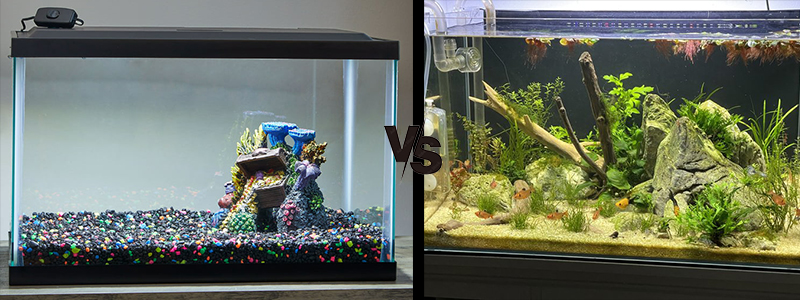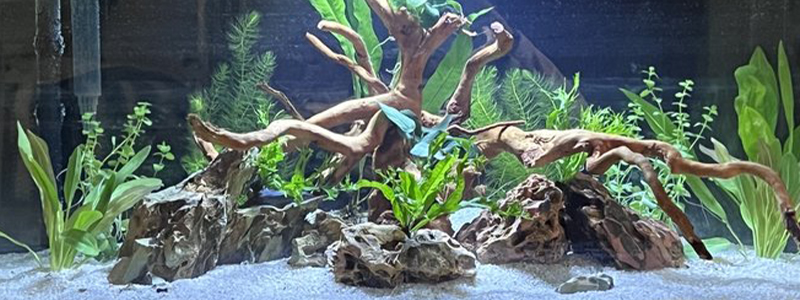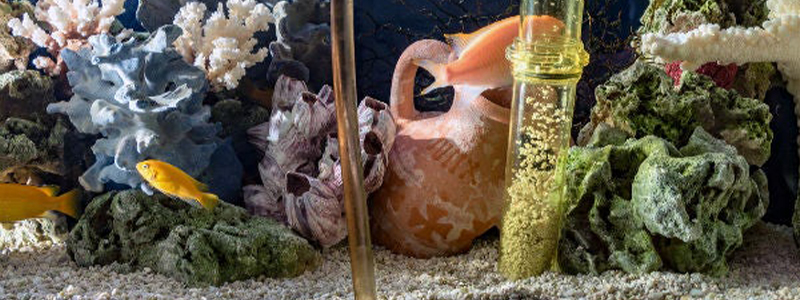You might have heard a lot of interesting facts about Platy fish, and rightly so! Platies are adored by fish enthusiasts because of their vibrant colors and friendly demeanor.
These delightful creatures originate from Central America and can adapt well to peaceful, aquatic environments with lots of plants.
Thus, we are going to share several fascinating aspects of these fish, including their breeding abilities, platies tank mates, can platy and guppy live together and also, can platy live alone!
Interesting Facts about Platy Fish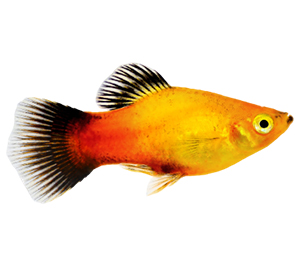
There is a wide range of Platies fish variations available due to selective breeding. These include Salt and Pepper, Coral Red, Mickey Mouse, and many more. This variety gives aquarium enthusiasts a wide range to choose from and that adds a unique element to their tanks!
- Sociable Nature
The Platies fish is well-known for its gentle and sociable nature, as it happily coexists with other tank mates. However, during mating season, male Platies become more active in their pursuit of females for reproduction. - Enjoy Variety of Food
A nutritious and appropriate diet is important for the health and happiness of platy fish. They enjoy a variety of foods, both packet food and the home made food. Also, make sure you include protein and plant based foods in the diet for their better growth. - Size
When it comes to the difference between male and female platy, there are a couple of key cues to look out for.
Size is one clue to check the difference between male and female platy. Typically, males tend to be smaller in size compared to females. In addition to this, another difference between male and female platy is about plumper abdomen.
These physical difference between male and female platy make it relatively easy to tell them apart just by observing their appearance. - Easily Reproducing Fish
Platies fish, famous for their ability to breed effortlessly, participate in regular reproductive cycles that result in 20 to 80 fry each time. Breeding these fish is a simple task. By adding both male and female platies fish to the aquarium, it is expected that fry will appear, making the process super easy. - Platies Eat Their Own Offspring
Platies fish have limited concern for parenting and tend to mistakenly eat their own offspring. And, this is why platies lifespan is shorter at times!
This behavior is completely natural, so there’s no need to be worried if you witness it happening. However, for the young platies to grow into adulthood successfully, it’s important to increase platies lifespan by preventing them from becoming prey. - Short Life Expectancy
About platies lifespan, they don’t live very long, typically only 2-3 years. Platies lifespan is considerably shorter than other freshwater fish species.
Moreover, Platies lifespan largely depends on the quality of their environment, water conditions, and proper nutrition. By taking extra care of them and providing optimal living conditions in the aquarium, you can potentially extend platies lifespan. - Control Algae Growth
The platies fish is well-suited for planted aquariums as it enjoys feeding on the algae that naturally forms on aquatic plants. Though, this might not be the most effective method to control and manage algae but even their little role matters a lot! - Strategies for Separating Fry
To protect the baby fish, you can create a special tank just for breeding. This way, you can easily move the female to release her offspring. Another alternative is to make multiple hiding spots in your tank so that the fry could hide in those places and grow.
Moreover, an incubator can also be placed in aquarium for protection against predators. By keeping the fry separate from adult fish, you can prevent them from being consumed unless that’s what you want. - Prefer Freshwater Areas
Platies fish have a strong preference for living in freshwater areas and are not typically found in saltwater or brackish environments. They happily thrive in slow water like rivers, ponds and lakes. - Male and Female Platy Ratio
Ensuring a proper balance between males and females is really important. Male platies fish tend to be quite persistent in their efforts to mate with females, which leads to frequent pregnancies and the production of fry.
This constant reproductive activity can cause stress for the males, ultimately reducing their lifespans. To address this issue, it’s recommended to have one male platy paired with two or three females. This arrangement helps alleviate stress levels and prevents excessive reproduction.
Platies Tank Mates
The Compatible Platies tank mates are;
- Tetras: The first option when you think of platies tank mates is certainly Tetras! They are known for being small, vibrant, and peaceful, and can create a pleasant atmosphere in the aquarium when kept with platies.
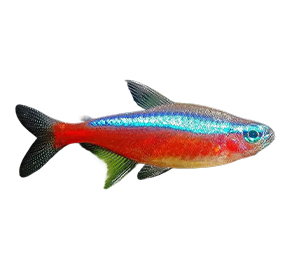
- Guppies: Guppies are sociable fish that make excellent companions as platies tank mates. It is recommended to keep them in groups of 3 to 4 as this enhances their overall well-being.
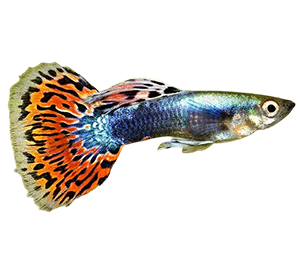
- Mollies: Mollies, which are closely related to platies, also have calm behavior. This makes them suitable to reside as platies tank mates.
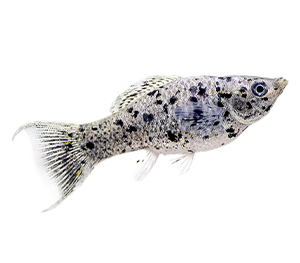
- Danios: The Danios are active and playful fish that thrive when kept in groups. Their interactive behavior complements other platies tank mates nicely and helps foster an energetic aquatic environment.
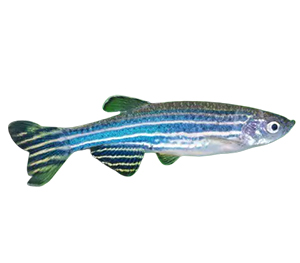
What is the Difference Between Male and Female Platy Fish?
- Appearance: The difference between male and female platy becomes quite evident with their appearance. They have quite eye-catching with their vibrant colors, slender bodies, and longer fins. On the other hand, female Platys have a rounder shape and less striking hues.
- Behavior: Males tend to be territorial creatures that often engage in chasing other fish around. In contrast, female platies fish take on a more peaceful attitude and prefer seeking shelter among plants.
- Reproduction: During the mating process though, things change slightly as males become persistent suitors for the females’ attention. Once fertilization occurs, interestingly enough it is actually the males who bear responsibility for incubating and protecting the eggs before they hatch.
- Size: When it comes to size, males generally reach a length of about 2 inches, whereas females tend to grow larger and can be up to 3 inches long.
- Shape: After size, the difference between male and female platy is linked to their shape. Male Platies fish have a more streamlined body shape compared to females, who typically display a rounder physique.
- Temperament: Last way through which you can find the difference between male and female platy is via their temperament. Male Platies fish often exhibit territorial and aggressive tendencies, sometimes even chasing other fish while female Platies have a peaceful nature.
Can Platy and Guppy Live Together?
If you have Guppy in your tank already and you’re wondering can Platy and Guppy live together, then the answer is yes!
In a community tank, platy and guppies make excellent companions. They peacefully cohabit with various other species such as catfish, mollies, swordtails, and tetras.
Can Platies Live Alone?
Although, you have got your answer for can Platy and Guppy live together, now that you are thinking to keep them separate then there is no harm in it!
Platies engage in social interactions and display a sense of companionship with their fellow platies. However, unlike fish that swim in schools, they do not stay closely clustered together unless they are expecting to be fed.
Did You Know?
A distinct version of the typical platy is known as the blue Mickey Mouse platy. It can be identified by two dots and a larger dark spot in its center.
In 2013, scientists discovered its genetic code, providing valuable information for cancer research and shedding light on evolution through investigations into behavior and pigmentation patterns. To distinguish between mollies and platies, differentiate via bigger size and unique fins.
Conclusion
To conclude our discussion on Platies fish and can platies live alone, it is evident that these fish contribute more than just attractive hues to a fish tank.
With their captivating actions and easy-to-maintain nature, there is no doubt that can platy and Guppy live together! They demonstrate how diverse aquatic organisms can coexist harmoniously!
FAQ’s
Q1. What makes platy fish happy?
Ans: Platies, despite being hardy, need the right water conditions to exhibit their natural behavior. It is important to regularly check and manage pH levels, hardness, ammonia, nitrite, and nitrate levels. Make sure that the pH remains slightly alkaline (between 7.5-8.5) and keep the hardness at a moderate level.
Q2. Do platy fish have teeth?
Ans: The southern platy fish, which belongs to the livebearer family, has a compact body with conical teeth and comes in a range of olive-brown shades
Q3. How many babies do platy fish have?
Ans: After giving birth, you can expect around 20-40 babies from the mother. Sometimes, this number may even increase to as high as 80.
Q4. What is the best food for platy fish?
Ans: The best food for platy fish includes pellets, flakes, frozen, or freeze-dried shrimp, krill, and worms.
Q5. How do I know if my platys are happy?
Ans: If your platy fish is swimming actively in the tank then it’s an indication that platys are happy.
Platy Fish Infographic


